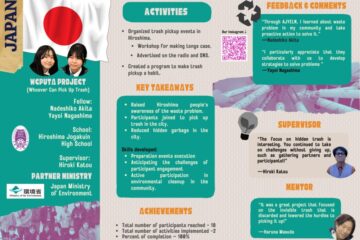Report by AJYELN Japan Team (Nadeshiko Akita and Yayoi Nagashima)
About the WCPUTA
The AJYELN Japan Fellows’ project, “WCPUTA” (Whoever Can Pick Up Trash Anytime) aims to eliminate hidden trash in the city of Hiroshima. The main purpose of the event was to make it a habit for citizens to pick up trash and to raise awareness about the trash problem in Hiroshima. We thought that by having the participants actually find and pick up litter on the sideroads, it would be effective in making them aware of the existence of hidden trash in the city of Hiroshima.
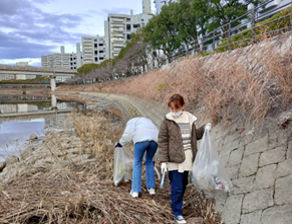
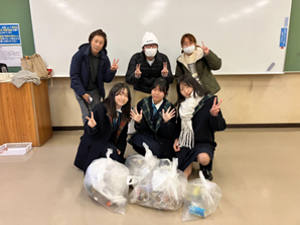
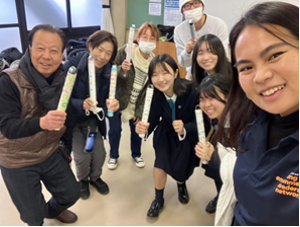
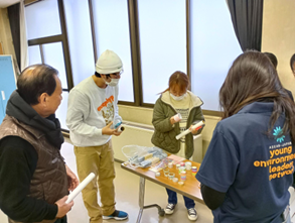
Figure 1. Participants in the 1st activity featuring their customized tongs and collecting trash in the city.
Gamifying waste collection
The event incorporated gamification ideas to encourage participants to make trash-picking a habit. The idea of gamification is to engage and incentivize the participants by making the activity competitive and goal-oriented. The participant who picks up the most trash during the two organized events receives a prize. The first prize was a Starbucks card worth 2000 yen, while second and third places receive prizes as well. In order to recruit as many participants as possible, we also decided to give out snacks to all participants.
Using apps to record collected waste
In the first event held on December 23, the trash collection was designed as a stamp rally, where participants have to locate trash and they can get a mark for every trash collected. However, we found that this strategy was inefficient as it did not produce as much collected trash as expected; so in the second event in January 13, the participants were asked to count the number of pieces of trash they had picked up. In addition, to encourage event participants to make litter pick-up a habit, a customization pamphlet was developed independently. The pamphlet introduced litter pick-up using stamp cards and apps for recording trash pick-up, such as “Pirika” and “GomiZero”.
Customizing participants’ tongs for waste collection
One of the highlights of the activity was for each participant to make their own tong cases. We asked participants to make their own original tong cases using masking tape and stickers. When we actually picked up trash in the town, we had the experience of walking around with tongs to pick up trash, which made us stand out and made it difficult to pick up litter. We also realized that carrying tongs was inconvenient. Based on this experience, we decided to make a case to store the tongs. The tongs case would make trash picking more comfortable and easier.
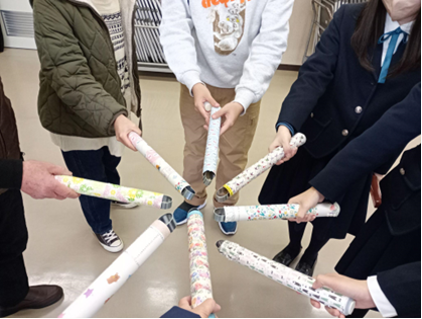
Promoting WCPUTA through KujiRaji, a local radio program in Hiroshima
First, in advertising the event, posters, and flyers with an overview of the event were produced. To get the word out to as many people as possible we created accounts on social networking sites such as X (formerly Twitter) and Instagram, where we posted information about the event. We also posted a video there with instructions on how to make a tong case. To further promote our event, we appeared on “KujiRaji”, a local radio program in Hiroshima, on 21 December. On the radio, we introduced AJYELN’s activities and WCPUTA project’s trash pick-up events. The radio was effective in promoting the event, as a certain number of participants were interested in the event after listening to it.
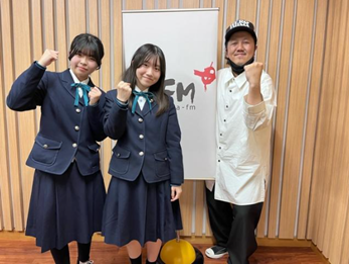
In our high school, we put posters and flyers on notice boards and had information about the event distributed to the whole grade level via Google Classrooms. To gather student participants we sent emails and envelopes to junior high schools, high schools, and universities in Hiroshima. Several of these schools responded to us and offered us in-school advertising. To recruit more participants we also recruited participants on Activo, a volunteer information website. As a result, six of the event’s participants applied from Activo.
Outcome of the 1st waste collecting event in December
In the first event held in December, we had about 4 participants and 4 organizers, including the two fellows and two mentors from the ASEAN-Japa Centre. There were not enough participants due to a lack of PR. We should have contacted more schools and other groups to inform them of the event. Also, we did not inform participants of the registration time, so some of them came earlier than we expected and we had to help them prepare. When explaining the WCPUTA project at the beginning of the event, it took longer than expected. Therefore, we had to change the schedule we had planned in advance. However, it was good that we were able to promptly inform participants of the schedule change and successfully adjust it. In addition, when counting the number of trash picked up, we did not establish a standard for how to count small pieces of trash. This resulted in a longer-than-expected time to tally the litter count. As a result, the entire event took longer than the pre-planned schedule, and the event end time was extended by 15 minutes.
However, there were some positive aspects. We ourselves tried to communicate with the participants, so they were able to participate in the event while feeling enjoyed and not nervous. We were also able to increase the participants’ awareness and interest in the issue of garbage, as they commented, “There is more garbage in the city than I thought” and “Picking up garbage is surprisingly fun.”
Outcome of the 2nd waste collecting event in January
The number of participants increased from the previous event because we increased our PR contacts and did a better job of notifying people about the event. The day before the event, we sent an email to participants informing them of the registration time and the day of the event. This made it easy to keep track of the participants, as they arrived at the venue at roughly the same time. When counting the number of trash picked up, small pieces of trash such as cigarettes and shards of glass were placed in mini boxes, and we counted the boxes to reduce the time required to count the number of trash picked up. Also, since we kept to the scheduled time we had planned in advance, we were able to finish the event on time.
We split into two groups from the beginning, which made it easier to organize the participants. Also, once again, we did our best to actively communicate with the participants. When we were making the tong cases, it was good that we talked to the participants and provided them with topics of conversation so that the conversation could be facilitated within the group, which improved the overall atmosphere of the participants. The participants in this event also seemed to enjoy picking up trash and were surprised that more trash was dumped in the city than they had anticipated. From this, it can be said that this event was able to increase the participants’ awareness and interest in the garbage problem.
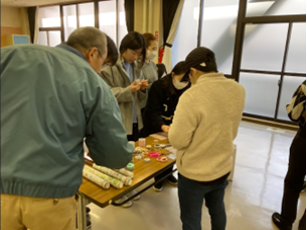
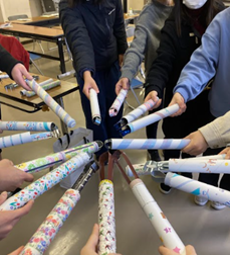
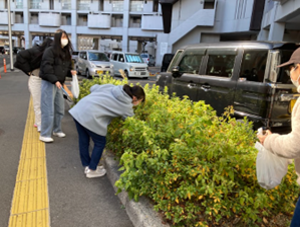
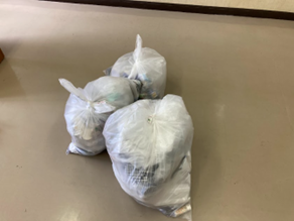
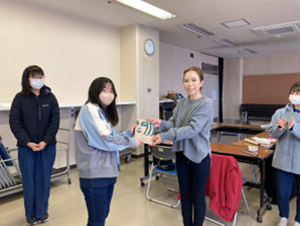
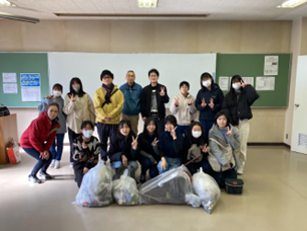
Figure 4. Participants in the 2nd event in January during the tong-making workshop and trash collection in Hiroshima City.
Conclusion
We organized trash pick-up events twice, with lots of people taking part. We urged participants to make the existence of ‘hidden trash- a litter problem in Hiroshima – known and to make it a habit to pick up trash. We also learned how to organize our own events and attract participants. It took a lot of work to prepare for events and recruit participants in the limited time available. Also, sometimes schedules were later than expected. However, we have gained a lot of good experience through this project as a result.


